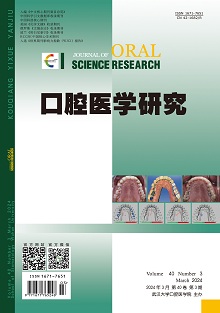|
|
Clinical Study on Effect of Selenium-enriched Wheat Grass Toothpaste on Reducing Gingival Inflammation and Controlling Dental Plaque
PI Xiaoqin, ZHU Bin, TONG Guoyong, LI Sensen, ZHAO Guodong, ZHANG Yiting, YANG Zaibo
2024, 40(3):
233-235.
DOI: 10.13701/j.cnki.kqyxyj.2024.03.008
Objective: To investigate the clinical impact of toothpaste enriched with selenium-rich wheat grass. Methods: Following the principles of randomized, double-blind, controlled design, 72 participants aged 18 to 65 years were randomly assigned to either the experimental group (using selenium-rich wheat grass toothpaste) or the control group (using no selenium-rich wheat grass toothpaste). The gingival index, gingival bleeding index, and plaque index were evaluated at baseline, 1 month, 3 months, and 6 months after treatment. Results: At 1,3 and 6 months,the mean scores of gingival index in experimental group and control group were 1.16±0.10 and 1.26±0.22, 0.99±0.91 and 1.21±1.16, 0.92±0.11 and 1.01±0.11, respectively. The mean scores of gingival sulcus bleeding index in the experimental group and control group were 1.12±0.23 and 1.24±0.27, 1.05±0.11 and 1.13±0.15, 0.91±0.12 and 1.05±0.09, respectively. The mean scores of plaque index in the experimental group and control group were 1.37±0.20 and 1.54±0.19, 1.14±0.21 and 1.37±0.24, 0.98±0.16 and 1.21±0.22, respectively. Notably, no adverse effects were observed during this clinical study. Conclusion: Selenium-enriched wheat grass toothpaste significantly hampers dental plaque formation, alleviates gingivitis, and enhances gum health.
References |
Related Articles |
Metrics
|

